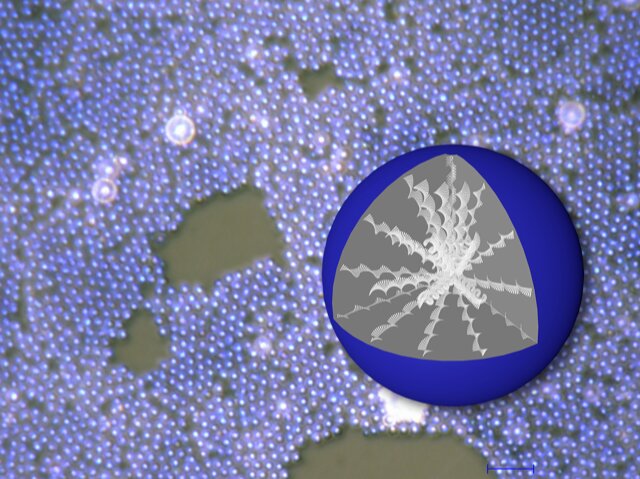A research group led by Dr. Jialei He of Nagoya University’s Graduate School of Engineering has developed a method for processing cholesteric liquid crystals (CLCs) into micrometer-sized spherical particles.
CLCs are a type of liquid crystal that possess a helical structure, giving them unique optical properties and the ability to selectively reflect light. By combining spherical CLC particles with commercially available pigments, the researchers developed a unique anti-counterfeiting QR code that can only be displayed under a specific circular polarizer. The results were published in the journal Advanced Optical Materials.
CLCs are an example of how nature can be used in engineering. If you have ever noticed the iridescent wings of butterflies or the glossy coating on the exoskeletons of beetles, you have seen what CLCs can do. Once identified, CLCs that mimic the units that generate the colors of the exoskeletons of beetles are synthesized in the laboratory because of their unusual colors and properties, which lie between liquids and crystals.
Particularly useful are the optical properties of CLCs. They display unusual colors due to their unique molecular structure and optical properties that lead to the selective reflection of light at specific wavelengths. CLCs consist of long molecules that repeat themselves in the shape of a helix. In the helix, the vertical distance from where one region loops around and repeats itself is called the ‘pitch’.
If the helix has repeating units that are close together, the liquid crystal has a short pitch and reflects shorter wavelengths of light, giving off blue and violet colors. However, those with a longer vertical space have longer wavelengths, leading to red or orange colors.
2023-07-15 01:24:02
Article from phys.org
